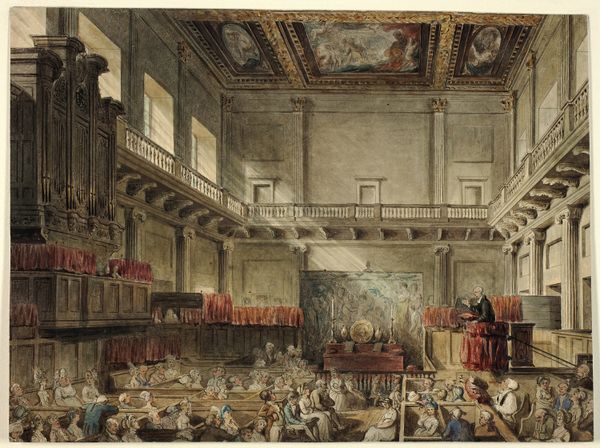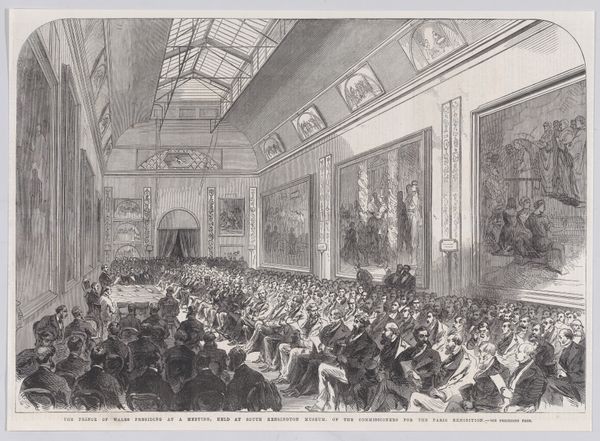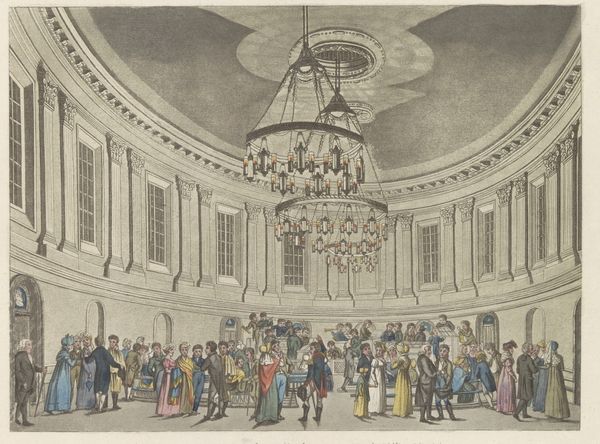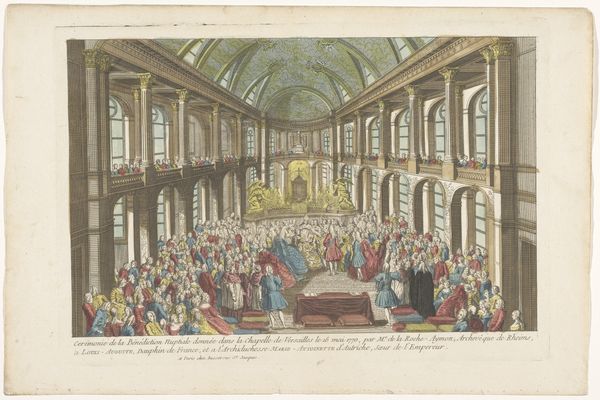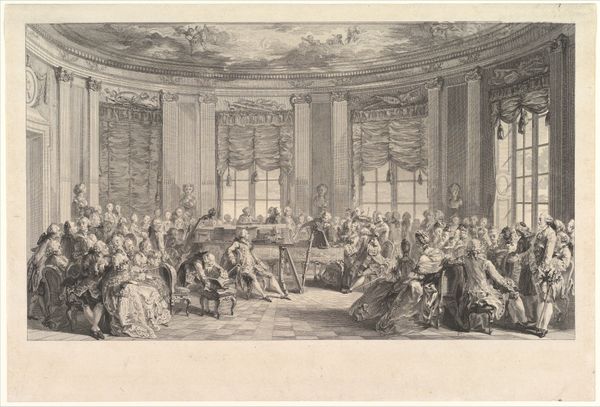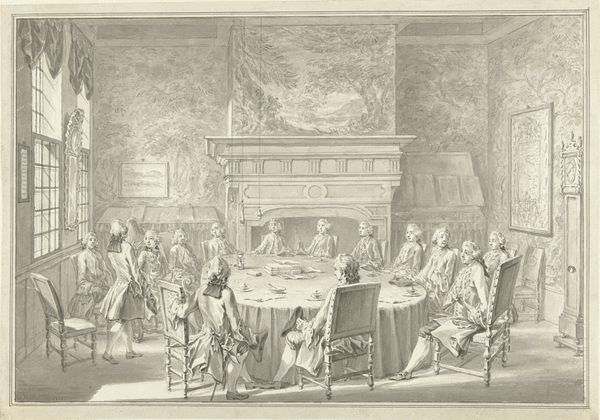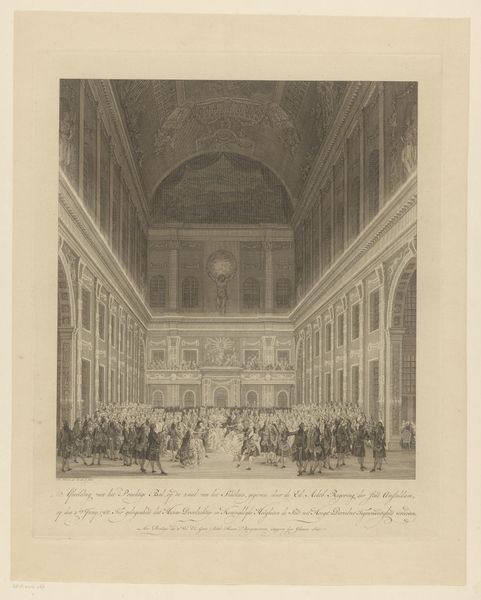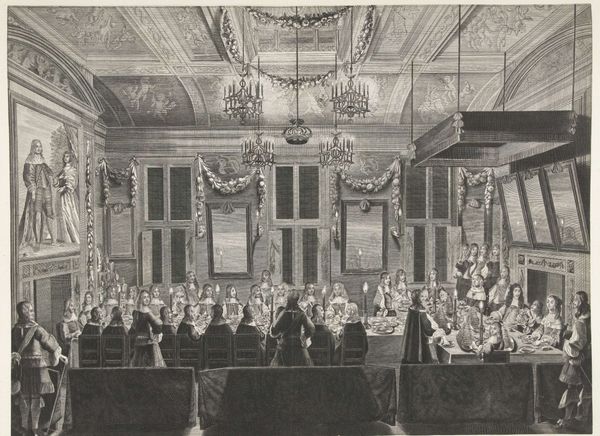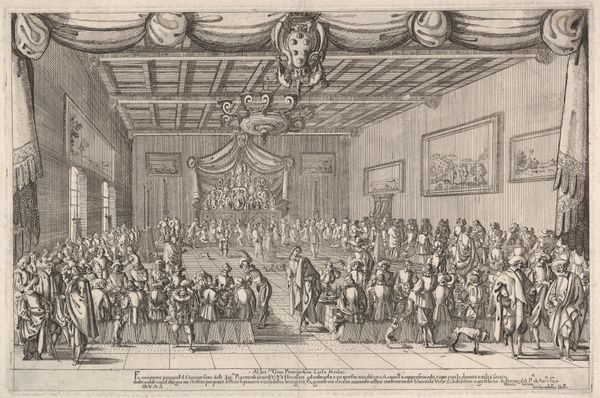
Study for Royal Chapel, Whitehall, from Microcosm of London c. 1809
0:00
0:00
drawing, print, paper, watercolor, architecture
#
drawing
#
neoclacissism
# print
#
paper
#
watercolor
#
romanticism
#
genre-painting
#
history-painting
#
academic-art
#
architecture
Copyright: Public Domain
Curator: At the Art Institute of Chicago, we have a fascinating drawing titled "Study for Royal Chapel, Whitehall, from Microcosm of London," created around 1809 by Thomas Rowlandson. Editor: My initial impression is of airiness—almost delicate, despite depicting a grand architectural interior filled with people. It seems to float. Curator: Indeed, Rowlandson captured a Neoclassical space teem with a Romantic sensibility, evident in the subtle gradations of watercolor that define its cavernous nature. We observe him playing with history and genre, mixing grand style with daily observation. The architectural bones speak of permanence but the wash and thin pen lines portray it more like a memory. Editor: And it's the combination of materials that piques my interest. A print overlaid with watercolor...that act of layering shifts the dynamic. It wasn't uncommon for artists during this time to utilize printmaking as a cost-effective means of replicating their art, with a potential boost through tinting and shading by hand. One wonders how much involvement Rowlandson had at the labor of each coloring. Curator: Precisely, the print provides a foundational structure, almost a visual shorthand for the architecture itself. The added watercolor brings it to life, investing the figures and their interactions with psychological depth. The faces especially capture the contemporary views. Take for instance the reactions during service and the social life around it... We read humor, boredom, attention—a fascinating window into a particular slice of London society. Editor: What’s also compelling to me is thinking about how these spaces and gatherings legitimized themselves through material splendor – even the seemingly subdued palette works towards a kind of understated grandeur, supporting established hierarchies of access. Curator: Certainly. Think of the chapel, beyond its religious function, serving as a backdrop for performances of social order, reinforced through symbolic imagery and the careful placement of bodies within its bounds. Even its unfinished state reveals, doesn’t it, the artifice inherent in such carefully constructed environments? Editor: A potent reminder that the tangible and intangible, the built world, and the social narratives are entwined, built atop layers of intentional actions. It gives me a new viewpoint on the making and marketing of art in this period. Curator: Yes, a beautiful encounter between representation and real presence and participation.
Comments
No comments
Be the first to comment and join the conversation on the ultimate creative platform.
